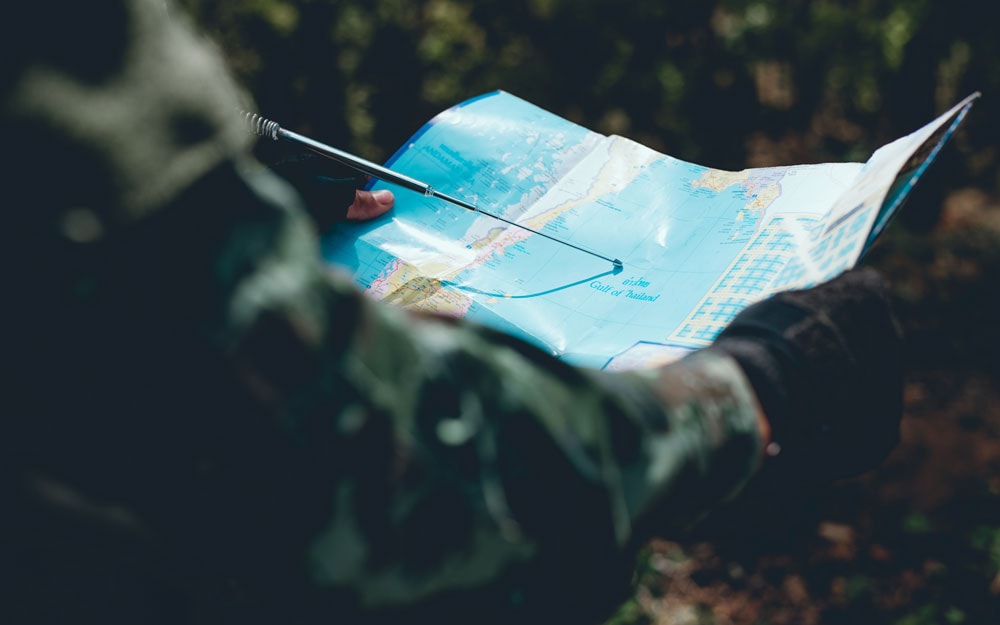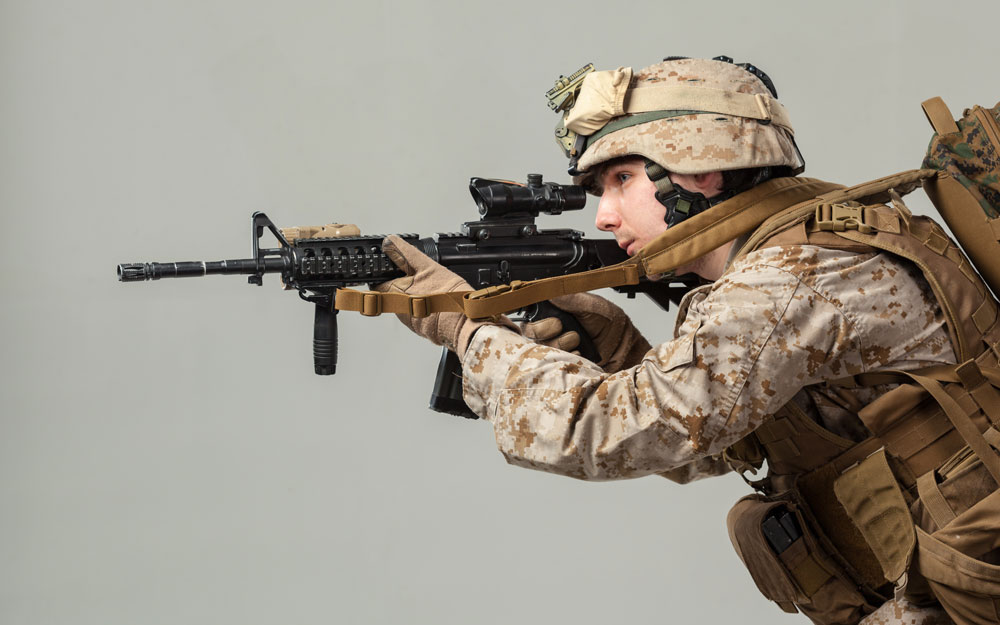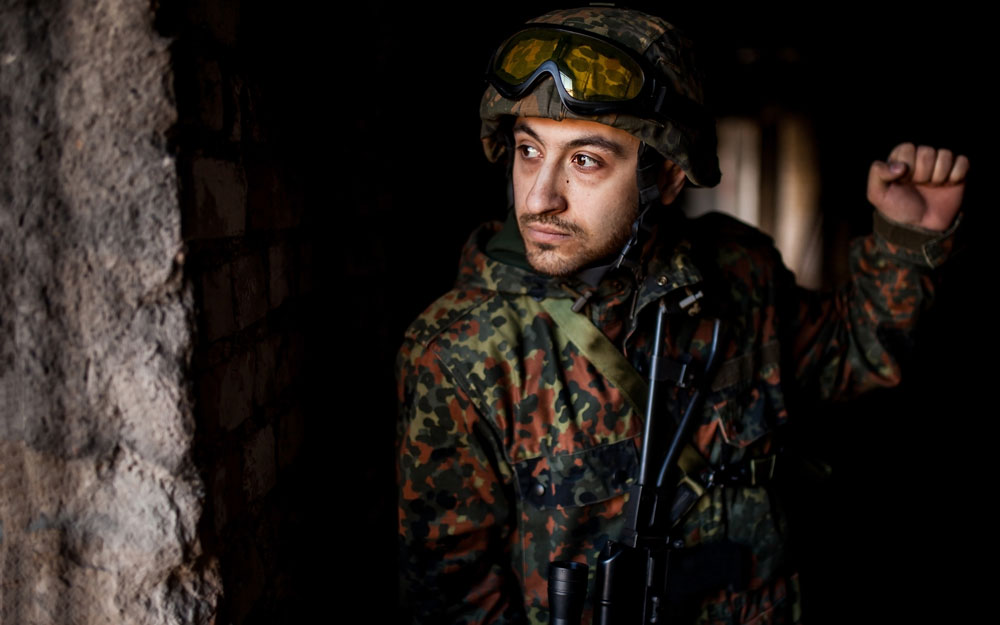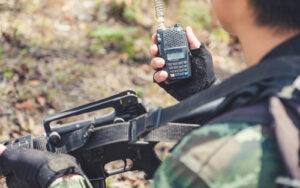 Airsoft is often a team sport, and like in most team sports you generally have specialized positions to fill.
Airsoft is often a team sport, and like in most team sports you generally have specialized positions to fill.
After all, in American football you have the quarterback protected by the offensive linemen, with wide receivers and running backs along with the kicker. In basketball, you have the point guard and the shooting guard, the power forward and small forward, and then the center.
The same goes for airsoft. The maximize your team effectiveness in battle, you need team members to play different roles to support each other and to attain your objectives.
So, what are these roles? Here are some of the most basic roles that should be filled out to help your team win.
Squad Leader

The team leader is the “general”, and they’re the one who calls the shots. In military units, having a “dictatorial” leadership style is certainly more efficient than leadership by committee. There’s no time to vote on every decision. Someone must call the shots and everyone needs to obey. That’s the core of military discipline.
Of course, you can still practice “democracy” and elect the team leader. After all, this is the person that the team members trust the most. In general, it’s the person with the most airsoft experience and who can be calm and think clearly even while in stressful conditions. You don’t want a team leader who doesn’t know what to do or who panics under fire.
The leader’s roles include the following:
- Assigning the other roles to the team members. This means the team leader should know the strengths and weaknesses of his team mates. While the leader can take into account a particular team member’s preference, he (or she) should still make sure that the role is assigned to a member who can actually fulfill the duties of that roll.
- Leading practice drills. For a team to play more effectively, they need to practice. The team leader should pick the right drills that the team can practice often so that the team can work together effectively in various situations.
- Checking on the gear. The team leader must make sure that the team is outfitted properly. They have to double check that each team member is properly equipped with the right weapons and enough ammo, and with the requisite safety gear. They need to check that the radios work together, that they have enough ammo, and that they also have other supplies like water, snacks, first aid kit, and spare power supplies and batteries. The leader may have some people to take care of these matters, but they still have to report to the leader.
- Deciding strategy and tactics. What does the team do during the battle? That’s for the leader to decide. The leader says if and when they attack, and determines the methods the team will use. The leader decides which ones go in first, and what other roles the others play.
Basically, if the team has to do anything, the leader has to sign off on it. Nothing gets done without the leader’s say-so. If there’s time, a leader can get suggestions from the rest of the team, since the leader can’t be expected to come up with all the ideas. Others may offer suggestions and advice, but it’s the leader who calls the shots in the end.
The importance of the leader cannot be underestimated. In various battles, victory has been achieved simply because of the army’s belief and trust in their leader. It’s crucial that the team leader stays at the back so that they can monitor the squad and the entire battle. They need to keep track of the big picture, and give new orders when the situation changes.
Rifleman

This is the modern version of the infantryman, and it’s the most basic unit in any fighting force. In fact, military experts like to say that there are only 2 types of military personnel. There’s the infantry, and all the others who, in one way or another, support the infantry.
Even in the US Marine Corps, they like to say that everyone’s a rifleman. A marine can be the cook, an aviator, or in military intelligence, but deep down they’re all still riflemen. That’s because only the infantry can hold and take ground.
In a team, the ideal situation is that everyone has the skills needed to be a rifleman. Perhaps you can assign half the team (or maybe 4 members in a team of 10) to remain riflemen while others also have more specialized tasks.
Here’s what to expect if you’re a rifleman:
- You’re one of the people who advance, take, and hold the ground. Your position basically determines your team’s position.
- Riflemen are the units that mainly engage the enemy. Your job is to fight, to put it simply.
- That’s why you hold a rifle, so you have the rate of fire and the range needed for battle effectiveness. You need to practice your medium range and long-range accuracy to be an effective rifleman.
- Of course, you’ll need lots of ammo and plenty of spare magazines. You’re also expected to wear a sidearm (usually a pistol), which is easy to carry. Getting out your pistol is also often faster than reloading a rifle.
- Sometimes your task is to engage in close-quarters combat. The mission can be to clear a room, for example. You’re often the first or second to enter, “kill” the enemies, and clear a room.
- You may also be tasked to attack the enemy position. That may usually mean trying to flank an opponent, or advancing. You can run from one covered position to another, while other team members offer suppressing, covering fire.
- In defensive battles, your job may be to hold the ground and take out advancing enemies while you fire from cover.
- Your gear, aside from your rifle and sidearm, also include medium armor. This armor shouldn’t be too heavy, so that you can still move quickly. You may also need a radio, especially when you’re separated from the leader. That way, you can inform the team leader of the current situation, and you can receive orders.
When you’re a newbie, your first goal is to try to master all the skills needed to be a good rifleman. It’s a job that needs doing, and there’s no such thing as a squad without a rifleman. Before you can try to do any other role, try to make sure you know how to be a rifleman first. Chances are, you’ll be asked to do a rifleman’s role in some types of scenarios.
Tactical Officer

The tactical officer generally has several roles:
- They replace the team leader when the team leader falls.
- They take over any position if a particular member falls or needs additional men.
- They can lead a second group if the team leader divides a large team.
Some say that this is an optional role, but this rank is vital when the team leader is either too busy or gets “killed”. In general, the tactical officer is the 2nd highest ranked officer in the squad. They take charge if the team leader falls.
This is because the tactical officer is often on of the most experienced person on the team. If the team leader falls, then the team can trust the tactical officer to take over, as they have the requisite knowledge and experience.
They also support the team leader by offering advice regarding strategy and tactics. They can focus on this task, so whenever the team leader asks for suggestions, the tactical officer can immediately propose a plan of attack or defense.
Tactical officers are also often versatile, since they may be tasked to do a job if another unit member falls. That means the tactical officer can function in any other role in the unit.
Finally, there may be situations when the team leader decides to divide his army. This is common in some battles, when some members hold off a frontal assault while others in the team try a flanking maneuver. The tactical officer leads this 2nd group, since he has the most experience in airsoft next to the team leader.
The tactical officer gear is often the same as with the team leader and the rifleman. They need a rifle, a pistol, medium armor, and a radio.
Recon

The recon units are the ones who tend to initiate contact with the enemy. When the team is on the move, they’re the ones who try to find the enemy position. They the advance guard who try to sniff out snipers, traps, and ambushes. Ideally, they can report the enemy position without being found out. Recon units can lead a charge against a prepared position, or lead the entry to a room that needs to be cleared.
Because they’re often the first in battle to engage the enemy, they’re often the first to fall as well. Sometimes the only way you find out a trap or an ambush is when the enemy attacks your recon units.
That leaves you with a problem. Some people want their least experienced men in this role, since they’re the first to fall. But other team leaders like more experienced players in this role, to reduce their chances of getting killed right away.
Often, the recon units are the smaller players who are generally not as easy to spot as their larger counterparts. They should know how to move silently while sneakily using cover. At the same time, they also have to be very observant. It’s great if they have superior eyesight and hearing, so they can sniff out they enemy first. They should be careful yet fearless, and they shouldn’t mind if they get killed early.
The recon units need the following equipment:
- A compact rifle instead of a standard rifle. A short M4 or an MP5 works better than the standard rifle, as the smaller weapon is easier to carry and won’t hamper mobility and stealth as much. A shotgun or even a pistol may also work.
- A radio is also crucial. In fact, most recon units are tasked to report in the enemy position first before they even attack. If they find themselves under attack, they should report the information (enemy location and numbers) before they get killed.
- Light armor. Again, the priority here is mobility.
- Extra ammo. Because these players have smaller rifles and lightweight armor, they may be asked to carry extra ammunition for the rest of the team.
Usually, in a team of 10 members you have 2 people as your recon scouts. They can back each other up while advancing stealthily towards enemy positions. In indoor games when clearing a room, they can enter first.
Support Gunner
 This is often the bigger guys in the team, since their job is often to carry the heaviest weapons. In general, their job is to provide continuous cover fire as the recon and riflemen units advance against the enemy, flitting from one cover position to another.
This is often the bigger guys in the team, since their job is often to carry the heaviest weapons. In general, their job is to provide continuous cover fire as the recon and riflemen units advance against the enemy, flitting from one cover position to another.
In defensive battles, the support gunners also provide suppressing fire to keep the attacking enemy from flanking the team’s position.
The support gunners have to be strong, since they need to carry a lot of extra ammunition. They really don’t have to be the best shooters in the team, since they can “walk” the pellets towards the enemy.
Sniper

This is often considered one of the “coolest” positions by newbies, but the reality can be very boring. In some cases, you may be asked to stay in the same prone position for hours until the enemy appears.
In most cases, the sniper can be tasked to act as recon. That is, they’re supposed to call in when they see the enemy before they engage. That’s why they often wear special camouflage “ghillie” suits, so they won’t be seen easily.
Snipers are often the best long -range shooters in the team. They tend to use the most accurate bolt-action rifles, and most airsoft fields allow for greater fps limits for snipers.
The psychological effect of snipers is well-known. Lots of units are afraid to get out of cover when they realize that there’s a sniper around. Sometime a sniper can even stay hidden until they can take out the team leader.
In some cases, a sniper unit is a 2-man job, with a shooter and a spotter. The spotter can use binoculars to find targets and to provide cover when the enemy attacks the sniper position.
Designated Marksmen

Some teams consider designated marksmen and snipers as the same, as they’re both tasked to hit enemies from farther away.
But there are actually some differences.
- Snipers tend to operate on their own. DMs usually work with the team.
- Snipers use a bolt-action rifle. DMs usually use a semi-automatic with a scope.
- Snipers are generally camouflaged and hidden. Most DMs are in plain sight.
- Snipers tend to remain in the same position. DMs are more mobile. The designated marksmen may move a lot to keep out of the range of the regular enemy riflemen.
In some cases, the DMs can work with the support gunners to provide suppressing fire for the advancing riflemen.
Grenadiers
 These are specialized units who are experts in using explosives. They’re very effective in lots of CQB combat, since they can really kill a lot of enemies quickly. Their grenades can be the following:
These are specialized units who are experts in using explosives. They’re very effective in lots of CQB combat, since they can really kill a lot of enemies quickly. Their grenades can be the following:
- Explosive grenades. These can fire a hundred BBs at once, and take out enemies behind cover. You can use them to clear rooms full of enemies.
- These fire as distractions, and may even render enemies temporarily blind. While the grenadier incapacitates the enemies, the rest of the team moves in to kill them.
- The grenade can emit smoke to keep the enemy from seeing your team’s movements.
Radio or Comms Officer
 The job here is to focus on the radio communications.
The job here is to focus on the radio communications.
- The radio officer has to make sure that all the radios are in working order and that they work with all the other radios used by the team members. The radio officer also checks that there are spare batteries for the radio.
- When the team leader is otherwise engaged, the radio officer listens to reports and relays orders.
- Sometimes the radio officer is tasked to make sure that everyone knows the hand signals used by the team.
Medic
If the game has rules for saving or reviving players, your team may have a designated medic. The job is to prioritize saving “wounded” players while others fight on.
In most cases, you don’t really need a medic. If you do need a medic, it’s best if all the team members know how to revive their team mates.
Conclusion
As you may have noticed, in airsoft teams you don’t have to limit yourself with a precise set of tasks and roles to play. A team leader can also be a rifleman. Your recon scout can be your sniper. Your support gunner can also be your designated marksman. Even your medic can also play the radio officer.
It’s actually fun to play a lot of different roles in airsoft. At the very least, you begin to appreciate the other roles that people play. It’s best if you can pick a role that suits your skills, experience, and disposition. But in the end, the goal is to have fun—regardless of your position!